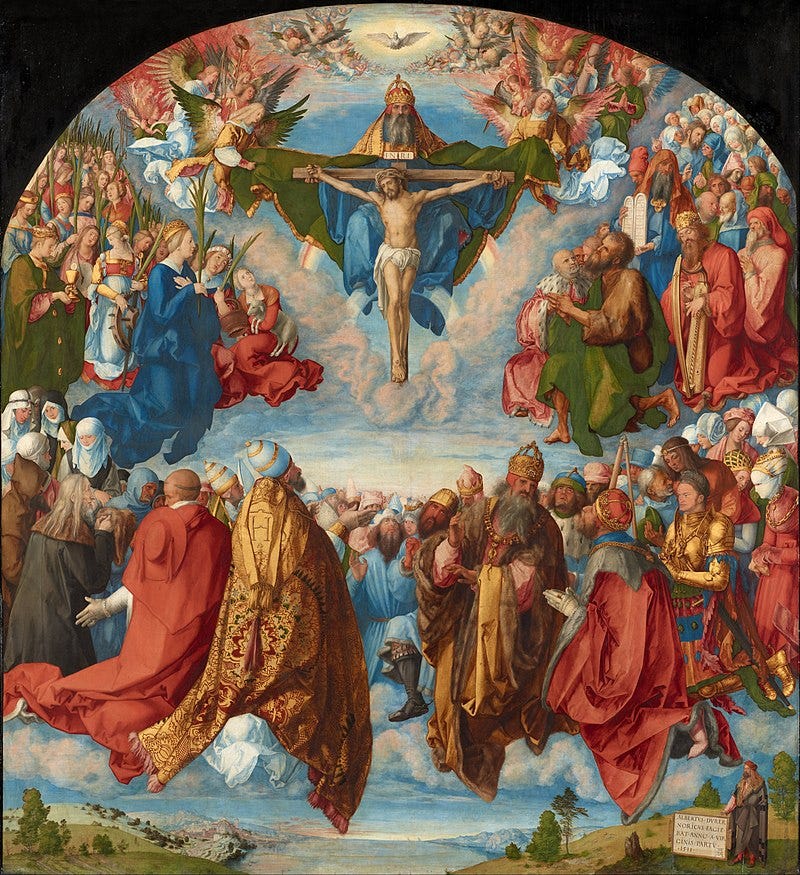Comments (with some additions) posted on Sasha Latypova post:
In my view, there is no commercial market from which FDA could remove the Covid shots, or any vaccines.
EUA [emergency use authorization], BLA [biologics license application], doesn’t matter.
Covid vaccines, like all vaccines, are used in war, not in commerce, not in commercial markets.
“Approval” is a legal fiction. All acts of FDA “approval,” “authorization,” and “licenses” are legal fictions.
All interactions between FDA (and precursor “regulators”) and vaccine-bottlers have all been fiction, all the way back to 1902.
Vaccines are legalized weapons, trafficked for maiming and killing purposes, not medical products labeled or regulated for purity, safety or efficacy.
The labels are part of the legalized weapon delivery system; the purpose of the labels is to deceive the targets into seeing a bottle of poison as a bottle of standardized, regulated medicine.
Further, FDA has no authority to regulate manufacture of any biological products, not just vaccines, and not just Covid vaccines.
There are no physical standards for product identity, purity, stability, non-adulteration, non-contamination, toxicity, or potency in statute or regulation governing manufacture of any biological products, and there are no analytical test procedures that poison-bottlers or FDA could apply to determine whether contents of any container meet, fail to meet, or exceed such standards (which standards don’t exist.)
The simulation for such standards in earlier decades was printed in the “Additional Standards” sections of fictional biological products regulations.
Those have been removed and replaced, since about 1996, with the current form of simulation: the “Chemistry Manufacturing and Control” or CMC package, through which poison-bottlers notify the FDA about what they (the bottlers) will pretend to have the technical capacity to do, and will pretend to do, and will pretend to self-monitor and self-report having done.
FDA then issues “approval” letters pretending that the poison-bottlers actually carried out the pretend processes using the pretend techniques, actually did self-monitor, and actually found themselves in compliance with the simulation of standardization.
Sometimes FDA also issues fake “lot release” documents, pretending that FDA has the technical capacity to corroborate the poison-bottlers lies, and has applied its technical capacity to confirm that the poison-bottlers properly used the fake-techniques the bottlers claim to have used.
FDA and poison-bottlers jointly use CMC packages, and labels, and “fact sheets” and fake “lot release” documents, to deceive the public into seeing bottles of poison as bottles of standardized, regulated medicine.
True physical standards don’t exist for biological products because they can’t exist. Analytical tests for assessing biological products for conformity with standards don’t exist because they can’t exist.
Such standards and analytical tests can’t exist because of the nature of biological matter.
All vaccines are intrinsically heterogeneous, unstable mixtures of biological cells, tissues, sub-components thereof, synthetic chemicals, nutrient solutions, carrier substances and other biologically-active junk.
Vaccine contents are not designed to specifications to cause predictable, controllable, beneficial effects.
Their contents are incubated, cultured, fermented, putrefied and decanted into bottles of ill-characterizable mixtures, then refrigerated, frozen and/or freeze-dried, then defrosted, dissolved and injected into bloodstream of targets to cause unpredictable, harmful effects with plausible deniability for those who recommend, bottle, transport and use the weapons.
Reader reply:
That is my understanding too. That is, that manufacture of 'biologics' class of drugs is so high-tech that GMP have yet to be developed. Thusly, one could test for a 100 adulterants and not find another 100 that were actually in the product...
Reply:
It's not that biologics manufacturing is so "high-tech."
It's not manufacturing in a technical way at all.
It's more like making yogurt, bread, beer or sauerkraut — which are made with limited, discernible, digestible bacteria and which are consumed through the digestive tract, which has the capacity to break down and use the food. And with fermented foods, or foods in which fermentation is one step in the process, humans and animals have senses (smell, taste, sight) that enable us to recognize when the food is not fit for consumption (contaminated, moldy etc.) and avoid eating or drinking it.
Vaccine propagation methods do not use only limited, discernible, digestible bacteria, and they're not subject to effective procedures that destroy most competing microorganisms to allow only the required fermenting microorganisms to outgrow all the others.
And vaccines are injected into the blood.
Vaccine propagation, as I understand it, involves throwing a bunch of living organisms (i.e. bacteria), plus cells and tissues taken out of living organisms (fungi, plant, bird, insect, animal, human) and other junk in an incubation vat with nutrient solutions; fermenting it while some of the material dies and decays; bottling it; refrigerating/freezing/freeze-drying it; and then reconstituting it at room temperature and injecting into living bodies where some of the processes resume at body temperature and many of the fragments of the dead organisms, cells and tissues (i.e. proteins) are biologically active in the form of evoking anaphylactic/allergic reactions and inducing chronic diseases known as cancer, asthma, leaky gut, and so on.
I agree that one could test for 100 adulterants or contaminants (also referred to as extraneous proteins, adventitious agents, bioburden, and other terms in pretense-regulations and Guidance for Industry documents) and not find another 100 that were in the product, and therefore there can't be GMP [good manufacturing practices] standards, but not because manufacturing is "high-tech."
It's because living organisms exist in so many forms, and are involved in so many transformations and interactions with each other over time, no one can reliably predict what might be in any sample to test for, nor can anyone predict what the effect of each thing that might be found, might be in the life and organ functioning of any person or animal into whose blood that sample might be injected, nor can anyone reliably predict whether the form that the sample contents were in at the time of testing, will be the same form that the sample contents were in at the time of injection, and there's a high probability that the two compositions will not be the same, because the contents of the bottle are not stable, and are not homogeneous.
While preparing the above comment exchange for posting, I also began drafting a more detailed exposition on the relationship between 42 USC 262(d), which relates to HHS Secretary authority since the 1986 National Childhood Vaccine Injury Act to “recall” biological products “upon a determination that a batch, lot or other quantity of a product licensed under this section presents an ” and 42 USC 300aa-28(a), which relates to vaccine-bottlers non-substantive pseudo-obligation since the 1986 NCVIA to:
“(1) prepare and maintain records documenting the history of the manufacturing, processing, testing, repooling, and reworking of each batch, lot, or other quantity of such vaccine, including the identification of any significant problems encountered in the production, testing, or handling of such batch, lot, or other quantity,
(2) if a safety test on such batch, lot, or other quantity indicates a is presented, report to the Secretary within 24 hours of such safety test which the manufacturer (or manufacturer's representative) conducted…”
I have located no definitions in statute or regulation for what constitutes an “imminent or substantial hazard,” and again: there are no validated, standardized tests or assays, or techniques or equipment, capable of fully identifying or characterizing the constituents of vaccine containers during or after processing, because those constituents are, by nature, impure mixtures of many different organisms and organic substances, and unstable or dynamic.
Thus, any process or batch testing that a vaccine-bottler might conduct will not be able to fully identify the biological and chemical matter contained in any “batch, lot or other quantity,” and will not be able to meaningfully characterize any product in terms of safety, efficacy, or “potential imminent or substantial public health hazard.”
Further, vaccine-bottlers are not required to collect or report information about adverse effects experienced by recipients of the products after the containers leave the bottling facilities.
Thus, there can be no product-quality-based information about “imminent or substantial hazards” for a vaccine-bottler to report to the HHS Secretary, and there can be no product-quality based grounds for the HHS Secretary to “determine” that a batch, lot or other quantity “presents an imminent or substantial hazard” and order a recall.
For more information on this element of legalized vaccine deception, see 42 USC 262(d); 42 USC 300aa-28(a); 42 USC 300aa-33(5) —
“(5) The term "vaccine-related injury or death" means an illness, injury, condition, or death associated with one or more of the vaccines set forth in the Vaccine Injury Table, ”
and 2017 paper, Recalibrating Vaccination Laws, Efthimios Parasidis, Boston University Law Review, Vol. 97 at p. 2224:
…In addition to adjusting physicians’ reporting incentives, lawmakers should amend the Vaccine Act to incentivize manufacturers to analyze post-market data on vaccine safety and efficacy. Manufacturers currently are responsible for documenting “the history of the manufacturing, processing, testing, repooling, and reworking” of vaccines, “including the identification of any significant problems encountered in the production, testing, or handling.” If safety testing reveals “a potential imminent or substantial public health hazard,” manufacturers must notify the government within twenty-four hours of the test…While these recording and reporting requirements are important, a key element is missing. Specifically, the Vaccine Act does not mandate that vaccine manufacturers collect or analyze safety and efficacy data from patients in which their vaccines are administered. Rather, the bulk of this work is left to regulators. As detailed, however, VAERS—the FDA’s primary mechanism for post-market review—is a “passive” surveillance system and “no active effort is made to search for, identify and collect information…”
See also, FDA Regulatory Procedures Manual, Ch. 5 (Administrative Actions) and Ch. 7 (Recall Procedures), which mention “imminent or substantial hazard” but under Implementing Regulations, Procedures and Industry Guidance [Guidance for Industry], at p. 16 of 153 of Ch. 7, simply note: “N/A” for “not applicable.”
Related:
March 15, 2024 - Deregulation of biological product manufacturing, mid-1990s to present. Don't-ask-don't-tell as applied to vaccines and other difficult-to-characterize, highly-susceptible-to-contamination medical-military poisons.
…The ostensible reason was to relieve paperwork burdens and costs on pharmaceutical manufacturers. The changes are scientifically pseudo-justified with assertions that manufacturers have developed such excellent internal quality-control processes and technologies, that FDA validation of manufacturer claims about product purity, sterility and safety are no longer needed.
This is nonsense, as are many other FDA claims to be found in Federal Register notices and guidance documents.
Biological products, including but not limited to vaccines, are inherently heterogeneous, impure, non-sterile, immuno-toxic, and unstable.
FDA lawyers, pharmacologists, toxicologists, factory inspectors and product reviewers know those truths. They have known those truths for many, many decades.
The real reason for the rule changes was to enable biological product factories to be more fully converted to non-regulated, black-box poison factories and to increase the toxicity of the poisons distributed from their loading bays…
…The NIH/FDA regulatory record for biological products is non-existent, because the object of the vaccination program was and still is to systematically poison people and induce chronic disease…
the most important thing [to facilitate systematic poisoning] was to build and maintain unquestioning public trust in the product class of vaccines….
The best way to build and maintain that trust — to shield the intentional poisoning from public view — was to pretend to operate a regulatory system that sets standards for product safety, efficacy and purity; monitors vaccine production to assess compliance by testing samples; and removes unsafe, ineffective and contaminated vaccines from the supply chain…
FDA and manufacturers coordinate with each other to ensure that vials are not properly tested and that information about the intrinsic heterogeneity, instability and toxicity of vaccines doesn’t reach the public in credible, actionable form…
June 17, 2024 - Pretense of biological product manufacturing de-regulation layered on pretense of biological product manufacturing regulation.
…For FDA and pharma, they’re deregulating a system that wasn’t regulating even before the deregulation: it’s pretense of deregulation layered on pretense of regulation…
Sept. 10, 2024 - 1901-1910: Federal government licensing of virus and toxin propagation establishments; criminalization of traffic in adulterated or misbranded drugs.
…The 1902 Virus-Toxin law did not prohibit adulteration or misbranding of virus, toxin and serum package contents…
…Viruses, toxins, serums, vaccines and related biological products manufactured or propagated at licensed establishments under the 1902 Virus-Toxin law were not subject to any of the provisions of the 1906 Pure Food and Drug Act. Virus and toxin manufacturers were not required to provide, on package labels, any information about ingredient identity, volumes, weights, concentrations, or effects. Congress was silent on the adulteration and misbranding of virus and toxin products…
….1938 FDCA [Food Drug and Cosmetic Act], Section 505(d) authorized the Secretary of Agriculture (later Federal Security Agency Administrator, later Health, Education and Welfare Secretary) to issue orders refusing to permit new non-biological drugs to enter interstate commerce on several grounds.
The manufacturing-related grounds to deny permission for distribution were: "upon finding...that the methods used in, and the facilities and controls used for, the manufacture, processing, and packing of such drug are inadequate to preserve its .”
1944 PHSA [Public Health Service Act], Section 351(d) authorized the Federal Security Agency Administrator (formerly Treasury Secretary, later HEW Secretary) to issue "licenses for the maintenance of establishments" to "propagate or manufacture" any biological product designated as a "virus, therapeutic serum, toxin, antitoxin or analogous product, or arsphenamine or its derivatives (or any other trivalent organic arsenic compound)."
The manufacturing-related standards for issuing licenses were: "upon a showing that the establishment and the products for which a license is desired meet standards designed to insure the of such products..."
The most important word in the FDCA section is , and that's the most crucial omission from the PHSA section.
Without an identified, identifiable, stable product, it is not practically or theoretically possible to insure qualities, properties, characteristics or attributes of propagation materials and methods, or to insure attributes that could inhere in a product itself, such as safety, purity or potency, in initial or in continued form…
From 1903 to 1944, biological product regulations set forth standards for contents of product labels. Labels were required to contain the name of the manufacturer; address of the manufacturer; license number (assigned to the establishment, not to any specific product prepared within the establishment); proper name of product; minimum potency of product if any; "No U.S. standard of potency" if no potency standard established; lot number; and date of manufacture or issue with period of potency, or expiration date.
Labels were not required to contain any information about the identity of any substances, quantity, mass, volume, concentration, purity, sterility, or predicted effects. The absence of these information items on labels rendered it impossible for any product to be deemed adulterated, contaminated or misbranded through any assessment method analogous to the requirements of the FDCA for non-biological drugs and rendered it impossible for any recipient to obtain information necessary to provide informed consent to treatment.
From 1903 to 1944, biological product regulations set forth procedures for examination of products by PHS NIH laboratory staff, but (as stated above), it was optional for an inspector to collect samples and forward them to the PHS laboratory. If NIH officers tested the samples at all, they tested the samples using unpublished, unvalidated test methods, comparing unstable mixtures of biological material bottled at the commercial facility to unstable mixtures of biological material bottled at NIH laboratories.
...
Standards for Products: General
[After enactment of the 1944 Public Health Service Act] The 1947 biological product regulations, at sections 42 CFR 73.70 to 73.79, introduced the early form of what would later become known as "lot release."
These provisions suggested enforcement mechanisms to insure relative (not objective) qualities for products that mimicked the standards under the FDCA that authorized removal of drugs from interstate commerce if "the methods used in, and the facilities and controls used for, the manufacture, processing, and packing of such drug are inadequate to preserve its identity, strength, quality and purity.” Recall: these qualities of non-biological drugs were defined by the USP-NF compendia (now known as Critical Quality Attributes or CQAs), and USP-NF was responsible for designating quality control testing materials and methods.
The lot release system set up for biological products was riddled with get-around clauses.
Examples include:
"[n]o lot of any licensed product shall be released by the manufacturer prior to the completion of tests for conformity with the standards applicable to such product" in a context in which there are no applicable standards;
"[t]ests for potency shall be made on each lot only after completion of those processes of manufacture which may affect the potency of the final product" in a context in which none of the processes of manufacture can be defined with specificity, and potency is an unmeasurable, infinitely variable factor of the interaction of the biological organisms in the starting materials with each other and with the animal or human recipient; and
"[t]he contents of a final container of each filling of each lot shall be tested for identity, if such a test is available, and for safety either after the labels have been affixed to the final container or affixed, both outside and inside, to the multiple container storage receptacle just prior to its sealing for storage purposes, except that exceptions to this procedure may be authorized by the Institute to apply when the volume of the final container is very large and when more than one lot is processed each day," in a context in which there are no available identity tests, and in a context in which general safety tests (added in 1960 at 42 CFR 73.72, eliminated in 2015, 80 FR 37971) are comprised of injecting "maximum volume tolerated" into two mice and two guinea pigs, and assessing whether or not they sicken or die in the next seven days, and "variations of this test, either in the volume injected or in the species of test animal used" are authorized.
Lot release testing was to be conducted by manufacturers themselves, with an option, but no requirement, for manufacturers to send samples to NIH for testing.
"Tests for safety, purity and potency applicable to the product shall be completed for each lot of any licensed product prior to its release by the manufacturer, and samples of any lot of any licensed product may at any time be required to be sent to the Institute for examination," again, in a context in which there are no valid, applicable tests for safety, purity or potency.
"Standard units or samples for comparison made available by the Institute shall be applied in testing for potency all forms of diphtheria antitoxin, tetanus antitoxin... and other products for which such units are available," in a context in which reference products are not held by NIH for products, and if they are held, their potency is expressed in probability-based, non-objective "immunity units."
Labeling
The 1947 biological product regulations, at sections 42 CFR 73.50 to 73.55, expanded upon the earlier forms of non-identifying label contents.
As reported above, container labels between 1902 and 1944 were required to provide label readers with the proper name of the product; name, address and license number of manufacturer; lot number and expiration date.
As of 1947, the outside carton was required to contain:
(a) the preservative used and its concentration;
(b) the volume of the contents, if a liquid, or the weight, if a solid, and the potency or dosage if more than one strength is dispensed;
(c) the recommended storage temperature;
(d) the words "Shake Well," or equivalent, when indicated by the character of the product,
(e) the dose and route of administration recommended or reference to such directions in an enclosed circular;
(f) the source of the product when a factor in safe administration; and
(g) minimum potency of product expressed in terms of official standard of potency or, if potency is a factor and no standard of potency has been prescribed, the words "No U. S. standard of potency,"
all in a context in which there is no stable potency, strength or dose, because the biological material is unstable and mixed, and effects vary immeasurably and unpredictably over time and across recipients, in which the source of the product is an unidentifiable collection of many biological organisms.
Additional Standards
The 1947 biological product regulations, at sections 42 CFR 73.90 to 73.96, added the first "Additional Standards" section, purported to require that Trivalent Organic Arsenicals be tested, by manufacturers and regulators, for "stability, solubility, arsenic content, moisture and relative non-toxicity."
In 1956, additional standards for poliomyelitis vaccine were added, and in 1957, additional standards for adenovirus vaccine were added.
The additional standards were inapplicable and ineffective from the day they appeared in the regulations, because they were based on the fictional scientific methods laid out by Leslie Webster (1939), Charles Armstrong (1939), and Enders et al (1949-1954), by way of Jonas Salk, Joseph Smadel and William Workman (more information below).
Mixtures of bacterial, animal and human cells and tissues were to be cultured in nutrient media (chicken embryos; cow, pig, horse serums; salts, sugars, amino acids), fixed with formalin or other toxic preservatives, and injected into mouse and monkey brains and muscles. Mouse and monkey blood was to be tested for non-specific antibodies, which would be reported as specific to alleged disease-causing agents. Mice and monkeys were to be killed and necropsied. Brain tissue was to be tested for cytopathic effect/lesions. The sick and dead proportions of mouse and monkey groups were to be counted. And "equivalent methods" and "alternative demonstrations" would be permitted as needed.
The conduct of even these pretenses of NIH testing was suspended by internal policy by 1962 (Smadel memo) and the "Additional Standards" sections were eliminated in their entirety in 1996. (61 FR 40153)
June 2, 2025 - There cannot be product liability exposure for manufacturers of products for which no physical, objective standards exist.
…no vaccine manufacturers have ever been or are ever subject to liability for the products they produce, because there are no physical, objective standards for safety, efficacy, purity, manufacturing quality control or any other parameter against which a product can be tested for compliance; there are no valid tests that would demonstrate compliance or non-compliance with such standards (which don’t exist to be applied, because FDA has never established or promulgated any such standards); FDA has no legal obligation to conduct any tests for compliance or impose any enforcement measures; and there is no access to courts or other fact-finding, law-enforcement entities, and no requirement that manufacturers submit to any fact-finding, law-enforcement procedures.
It doesn’t make any legal difference whether a product is an EUA (emergency use authorization) product or a BLA (biologics license application) product, or any other classification, going back to 1902.
There are no physical standards for biologics, no methods to assess their compliance with such standards (which don’t exist) and no procedures or venues for fact-finding or enforcement….













